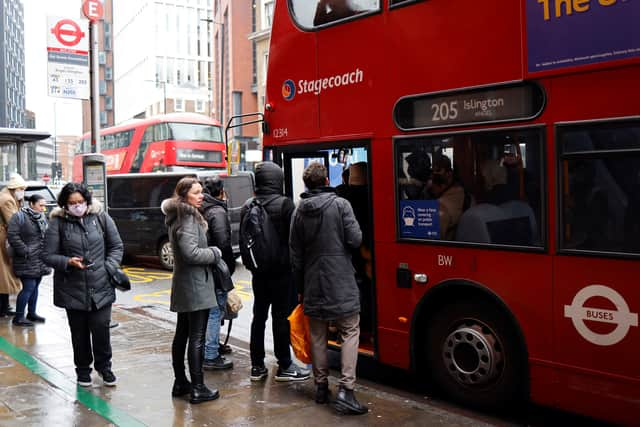TfL: Nearly 1,000 London buses cut from fleet since 2017, new data shows
and live on Freeview channel 276
The number of buses servicing Londoners has been cut every year since 2017, new data shows, with the mayor Sadiq Khan accused of “not prioritising public transport”.
Between 2020 and 2023, as of March 31, the data, retrieved via a freedom of information (FOI) request, shows the number of London buses has dropped from 9,102 to 8,643, with a reduction recorded for each of the years covered.
Advertisement
Hide AdAdvertisement
Hide AdAudit reports also available on Transport for London’s (TfL) website meanwhile demonstrate there have been cuts to the bus fleet consistently since 2017, when 9,616 were recorded.
Nick Rogers, a London Assembly Member (AM) and City Hall Conservatives transport spokesperson, said: “While Sadiq Khan punishes drivers with his ULEZ expansion, the number of buses has declined every single year since 2017 on his watch. It is simply unacceptable that the mayor wants to take money away from people who rely on their cars, while failing to provide adequate public transport alternatives. London deserves so much better than Sadiq Khan.”
Liberal Democrat AM and transport spokesperson Caroline Pidgeon claimed the data shows “that behind all the rhetoric, the mayor is not prioritising public transport in London”.
Ms Pidgeon continued: “This isn’t just about the physical number of buses, data uncovered by the Liberal Democrats earlier this year showed that under Sadiq Khan, bus services in London now cover 12 million fewer miles across the capital than they did in 2016. Increasing bus services is absolutely vital for Londoners especially given the mayor’s plans to expand ULEZ in a few months’ time.”


Advertisement
Hide AdAdvertisement
Hide AdTom Cunnington, TfL’s head of bus business development, said the number of buses reflects the demand on the network, with the pandemic and rail improvements in particular affecting services in central and inner London.
He said conditions attached to the government’s Covid funding deal meant cuts had to be made, though the majority of routes initially due to be axed were saved.
Mr Cunnington continued: “Our ultra-low emission bus network remains one of the largest and most comprehensive in the world, with more than 95% of customers less than a five-minute walk from a bus stop and more than 100 routes running overnight. Ahead of the ULEZ expansion later this summer, we are seeking views on our proposed Superloop, which would connect key town centres, stations and transport hubs in outer London, and planning a host of changes to services in this part of the city to make the bus an easy and affordable alternative to the car.”
TfL is currently consulting on plans for two bus routes, namely a new express route between Harrow and North Finchley (X183), part of the Superloop, and a proposed extension to route 223, to improve links between a new housing development and transport options in Harrow.
